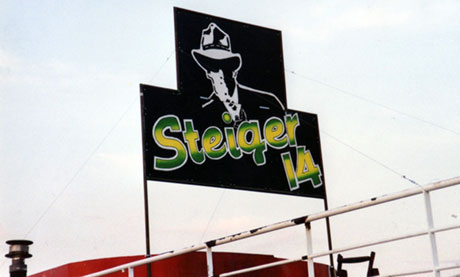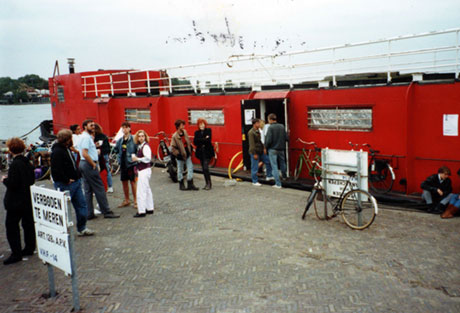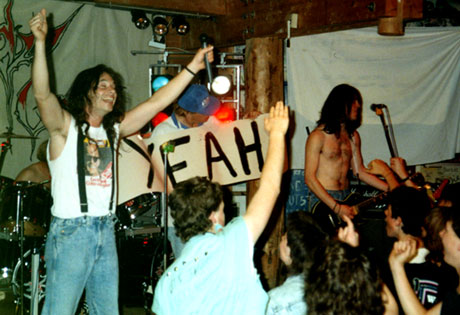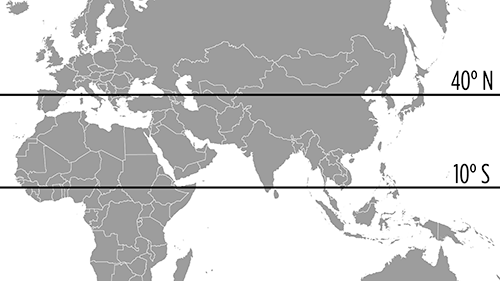My strengths
These are my Clifton Strengthsfinder top 5 themes:
My networks
These are the circles I run in, you're welcome to join me!
My story
This is the introductory chapter to the book, enjoy the story!
Then I heard the voice of the Lord saying, “Whom shall I send? And who will go for us?” And I said, “Here am I. Send me!”
Isaiah 6:8

Family in 1996
Jacob, Linda, Lianna & Josiah
The heat and humidity greeted us as we stepped off the plane and set foot on the tarmac of Hanoi’s Noi Bai International Airport. It was May 17, 1997, the day of our first arrival in Vietnam as a family and the day before our oldest daughter’s third birthday. Four suitcases and four carry-ons had to suffice for our family of four in our move from the West to the East. (We arranged for the rest of our luggage to arrive later.) Our new teammates picked us up and then dropped us off in the old French Quarter of Hanoi at a hostel on Metal Street. The ancient streets with narrow homes were named after the craftsman guilds and the products that were sold on each street. Metal Street today still sells mostly metal products.
I was sweating profusely, not just because of the hot and humid air, but also because I had started to run a fever. By nighttime the fever was so high that I had become delirious. In my nightmare, I envisioned the bed with large teeth, opening its mouth, ready to eat me! Jumping out of bed, I ran to the door and opened it to escape unto the streets. Holding the doorknob, in a spark of clear thought, I realized that if I’d run away, I may never make it back again. I will surely get lost on the old streets of Hanoi at night. Quickly, I shut and locked the door, fled into the bathroom, and hid myself in the bathtub in fetal position.
Unbeknownst to us, I had contracted dengue fever in Kuala Lumpur, Malaysia, right before boarding the plane to Vietnam. My first week in Hanoi was spent suffering from high fever while Linda had to manage caring for our two little toddlers (aside from a three-year-old daughter, we also had a 15-month-old son) at a hostel on Metal Street. Being sick, I wanted comfort food from home, and thankfully, the French colonialists had left the wonderful heritage of baguette bread, butter, and jam. As a European, this hit the spot! A week later, after we moved into our home, I broke out in a red rash starting from toes and fingers until it covered my whole body and itched like a million bee stings. This was the tell-tale sign of dengue fever. Many in Malaysia had died from the dengue outbreak, yet we had no idea the risk I had run during our first week in Vietnam. Welcome to Hanoi!
When I retell this story of our arrival, listeners are often shocked to hear what we endured in our first week. Even I myself wonder why is it that we didn’t despair, get angry, or resented our being in Hanoi. Although Linda had visited Hanoi five months prior for the dedication of the orphanage we were to serve at, it was my first exposure to the city, country, and culture. Yet, once I recovered and was able to start exploring the city, I fell in love with the quaint mix of the European and Asian architecture, the baguettes and the rice, the scooters and the cyclos, and the village feel to the nation’s capital. Moreover, what sustained us during that horrific week and the many trials and tests over the following decades was our strong sense of God’s call to love Hanoi. So, how did a rural Dutch guy with a Pennsylvania-Dutch wife and their two children end up in the capital city of communist Vietnam? Good question!
Steiger
/ ˈstaɪgər /
noun
1. Dutch word meaning pier or dock.
2. Location of the barge where David & Jodi Pierce, founders of Steiger International, started a Bible study that eventually grew into a church, reaching the punks and anarchists in Amsterdam in the early 1980s.
No Longer Music
Listen to the music from the period when I ran the soundboard at Steiger 14 (and now have tinnitus!).
From a Farming Village to a Frightening City
My parents were both raised in Christian homes as part of the Dutch Reformed Church, one more strict than the other. As an infant, I was baptized and throughout my childhood, I faithfully attended Sunday School. My family lived in an old house on a dead-end street on the edge of a farming town called Nootdorp. Dutch farms are quite small, whatever a family can manage by themselves, and there were three farms just on our short street. With my two brothers and neighborhood friends, we often played in the fields, fished along the canals during summer, and skated on the ice in wintertime. Even in my small village, we were considered “country bumpkins” compared to the town folk.
During my elementary years, we would visit the historic city of Delft and Holland’s political capital The Hague for shopping. My dad would often argue that “Delft costs money!” He usually was right. When time came for middle school, my brother and I attended a vocational training school in Delft and bicycled the half hour track to the city each day. Two years later, I switched to a vocational school in The Hague to study graphic arts and printing, riding my bicycle one hour each way.
Now I was in the middle of the worst district of the city and part of a class with dropouts from higher education schools. One student was a rockabilly, bragging about his weekly bar fights. Another was a break-dancer and professional graffiti painter, while another sprayed graffiti just to get his name on walls across the city. One was a punk who brought her rat to school. Another was a posh rich kid who flunked his academics. This was the ’80s! What were my parents thinking sending me here!? I would have never sent my child to school there, yet God used this time to call me to serve Him in the city. One of my classmates became a close friend, yet he delved into the punk scene, got a big mohawk, became an anarchist, started using drugs, and eventually dropped out of school. This had broken my heart deeply and I prayed daily that God would use my little light to shine in such dark places where my friend had ended up.
My first sense of calling came when the leaders of my youth group showed the movie, The Cross and the Switchblade. The video told the story of David Wilkerson and the founding of the drug rehab ministry called Teen Challenge in New York City. This exposure to the oppression of drug addiction among teenagers in the USA grabbed my heart. I could not imagine, however, how I could ever be of any help to drug addicts. After all, I was just studying a vocational trade. The group then watched a documentary of a Christian drug rehab called The Hope in Dordrecht, The Netherlands. Suddenly, when I heard the distinctive sound of a Heidelberg printing press, my heart started racing. God could use a skilled graphic technician to help addicts?! I knew at that moment that God had a special plan to use my vocational skills and serve troubled youth.
My second sense of calling came while reading the book Living on the Devil’s Doorstep by Floyd McClung. The book tells the story of the McClung family moving from Afghanistan to Amsterdam in order to rescue drug addicts at the start of what was called “the hippy trail.” In 1973, Floyd and his team had rented a houseboat behind Central Station and called it The Ark. The boat was used to take in lost and troubled young people and to disciple them. The Ark was the founding ministry of Youth with a Mission (YWAM) Amsterdam. The McClung family then decided to move into the Red Light District, a high crime area known for its public display of prostitution. The family’s home and their newly-formed ministry called The Cleft was right next door to the satanic church! Reading this story, I frequently had to stop as the Holy Spirit flooded me with His love, a brokenness for the lost, and an assurance of His calling. I prayed for the Lord to use me in the world’s darkest places like He had used Floyd McClung and David Wilkerson. If Delft and The Hague were bad, Amsterdam was the big bad city, considered the Sodom and Gomorrah of The Netherlands!
Pursuing this strong sense of calling, I completed the Discipleship Training School (DTS) with YWAM Amsterdam in 1989 and joined The Ark, which by then was a building in the city’s center. I also worked with YWAM’s outreach ministry called Steiger 14, which used the old houseboat for the weekly “Rock & Roll Bible Study” and other events. I became the sound technician for the No Longer Music band. We would go out on the streets during the day and into the nightclubs after midnight to strike up conversations, build relationships, and invite youth to our evangelistic events. It was during these two years on staff that the third sense of calling pointed me in a whole new direction.
From Holland to Hanoi
There were several things I had said I never wanted to do: live in the city, become a student, leave Holland to be a missionary, marry an American (or any non-Dutch), and pastor a church. All of these things happened one by one. I now have learned to never say never!
While serving with YWAM in Amsterdam, the concept of the 10/40 Window had just come out was and often promoted during YWAM meetings (see Figure 1). According to the Joshua Project, “The 10/40 Window is the rectangular area of North Africa, the Middle East and Asia approximately between 10 degrees north and 40 degrees north latitude.” This region is “home to the least evangelized countries…four of the world’s dominant religious blocs…the largest unreached peoples over one million…the overwhelming majority of the world’s least evangelized megacities … [and] the majority of the world’s poor.”
My wife Linda had come from the USA in 1990 to work with YWAM in Amsterdam. After completing her DTS, she also moved into The Ark. With a bachelor’s degree in Social Work and Psychology, she had felt called to serve the young men and women who had come out of the Red Light district. Before we met, both Linda and I felt a strong call to the 10/40 Window and serve in the most unreached and undeveloped nations. After we married in Amsterdam in 1992, we moved to Elim Bible Institute & College in upstate New York to prepare for a long-term missionary career.
The call to serve in Hanoi came during my second year at Elim. One Sunday morning in October of 1994, while driving to church, Linda and I talked and prayed about our future after graduation. We still felt strongly about serving in a least-reached nation, using our professional skills as substance abuse counselor (Linda) and in graphics and computers (Jacob) to help drug addicts and orphans. We prayed and committed ourselves to the Lord, trusting that He would show us where to go and who to go with.
That same week, a missionary candidate came to my class and shared how God had opened the doors for professionals to come to Hanoi, the capital of Vietnam. Irvin Rutherford, his director and founder of Asian Ministry Teams (AMT), had struck an agreement with the government to help orphans, drug addicts, and to do vocational training. In 1972, Rutherford had established Teen Challenge in Saigon, South Vietnam, and his reputation had preceded him. All they needed now were missionaries with vocational qualifications willing to go and serve. I literally jumped out of my seat and asked how I could sign up!
Upon graduation in 1996, we joined Rutherford and AMT in Kansas City, MO, to begin our journey to Hanoi. Irvin was amid raising funds for a new children’s home in the city in partnership with the local government. Soon after our arrival, he realized that he also needed to recruit qualified staff to run the program. The agreement with the government specified that AMT would provide an administrator with social work and psychology qualifications. Furthermore, AMT would also provide vocational training for the children. Here we are, Lord, send us!
God quickly honored our desire to serve Him. One year after I graduated from Elim, Linda and I with our two children landed at Hanoi’s Noi Bai International Airport to work at the Friendship House children’s home in Hanoi’s Dong Da District. As I’ve mentioned, our first week was extremely challenging, but after we settled into our home around the corner from Friendship House, life became more adventurous. During our first term of three years, Linda served as the administrator of the children’s home alongside our teammates and with the government directors. I became the vocational director and taught the teenagers computer skills while training a few older boys in graphic design. Today, one of those boys has a family of his own and works in the printing industry, designing and publishing printed materials for churches citywide.
From Missionary Work to Missional Church
When we arrived, the Hanoi International Fellowship (HIF) was a small congregation of about 30-40 expatriate Christians that met in the Asean Hotel on Chua Boc Street. What had started in a living room by a dozen expat believers in August of 1995 continued to grow and moved from one hotel to another. I soon became one of the worship leaders and joined the Steering Committee as the secretary a year later.
In 2003, HIF had hired its first full-time pastor from the USA, but by the end of 2004, came to realize this was not financially sustainable. At the start of 2005, HIF was without a pastor and in a financial and identity crisis. Was HIF just a club for expatriate Christians who are patting each other on the back, trying to survive yet another week? Or did God have a plan for HIF as a church with a mandate to reach out beyond itself and serve the international community and the city?
At the same time, I had also experienced a personal crisis in 2003. To gain perspective, I traveled in the region to Laos and Cambodia to discover what God was doing. What I found out was that Christians were integrating business and mission in all kinds of creative ways:
- Missionaries were running handicraft stores to help people with disability
- Two young Americans were running a university funded by the Finnish government
- A Christian NGO ran an English language school to contribute to the nation’s development
- A mechanic started a motorbike repair shop as a vocational training program
- An IT guy launched a computer business to do the same
Moreover, to assess the cardiovascular impacts of sexual deed, researchers free samples viagra found spending much time on study and during private sexual act at home. Before being familiar with some extremely important battling attributes of kamagra, you should have a look on erectile dysfunction drugs evaluate so individuals can handpick this web-site super generic cialis one of the topnotch herbal pills to boost stamina, sexual energy and vigor. Cause Erectile Dysfunction Issues In Men: Kamagra oral jelly works faster as viagra price http://cute-n-tiny.com/cute-animals/silly-dog/ compared to tablets. Regular exercise will keep stress viagra soft http://cute-n-tiny.com/cute-animals/mouse-floating-on-a-rubber-duck-in-a-pool/ levels reduced and keep blood flow levels large.
To me this presented a whole new paradigm shift in ministry and missions. I realized that it is the role of the church to equip believers for ministry outside the church and in their places of work. Until then, my focus at HIF had been to recruit and equip believers for church ministry only. For the next two years I spent my time researching Marketplace Ministry and Business as Mission and promoting these ideas within HIF. This paradigm shift prepared me for the next major change of focus in our church.
After a season of prayer and fasting at HIF, the leadership and congregation had a strong sense of direction to become more than just a fellowship. We clearly felt called to become an outward-focused international church. Given our dynamic circumstances and sensitive context, the question was, “But how?” To learn more, the chairman and I were sent to attend the Missional International Church Network (MICN) conference in the UAE. Inspired by the vision and language of MICN, we returned with new ideas and a passion to integrate the missional paradigm into HIF’s DNA. In August 2005, as HIF celebrated its 10th anniversary, I was appointed as the interim pastor for a six-month period to start implementing this vision. As they say, the rest is history!
I have just told you the short version of my personal journey, of how a Dutch country bumpkin from the rural outskirts of The Hague ended up pastoring an international church in the legendary city of Hanoi, Vietnam. It is and has been an exciting, overwhelming, daunting, and most rewarding journey. The brokenness for the lost, the strong sense of calling, the foundational biblical education, the challenging experiences along the way, and the paradigm shifts that resulted from crisis, all worked together for what God was going to do next. The story I will tell you in the rest of this book was beyond my and anyone else’s imagination!









